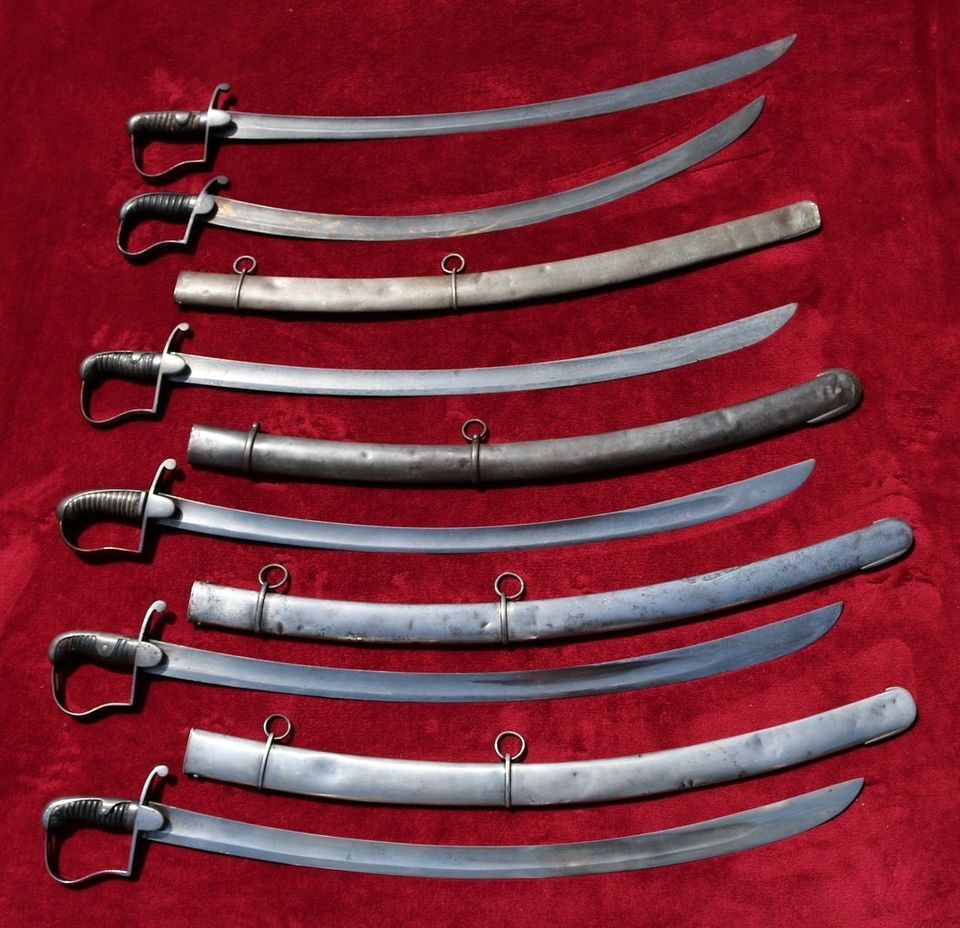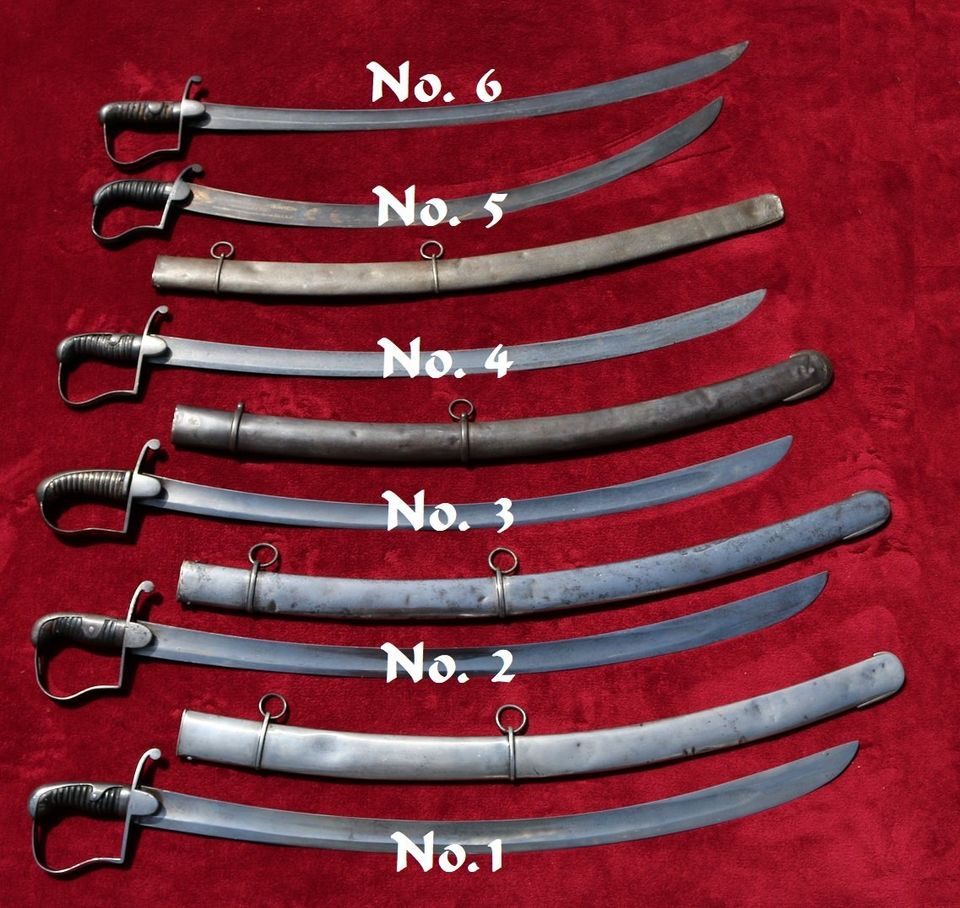How much does a Napoleonic era British light cavalry sabre weigh? This is a question I see raised fairly often online, together with the question of where they should balance.
The British 1796 pattern light cavalry sabre, designed by Major-General John Gaspard Le Marchant of the 2nd Dragoon Guards, is one of the most beloved and iconic military swords of any country and any time.
It is one of the most popular models of sword for collectors around the world and has been for a long time. But this adoration comes with some baggage, in the form of urban myths and misinformation.
One myth is that the French during the Napoleonic Wars somehow objected to this sword, due to the wounds it dealt. There is no real evidence for this and the suggestion makes no sense, given that similar curved blades had been in use by numerous other nations beforehand, including the French themselves, and would continue to be, well into the 20th century.
The French cavalry in general were exponents of the thrust, even with curved blades, and do not seem to have been either overly concerned with, or particularly respected the cut.
Another myth is that this model of sword was copied from the Indian tulwar/talwar. This is basically nonsense, as the only design feature in common is that they are both curved. The overall blade shape, with its flared tip and wide, shallow fuller is very unlike Indian tulwars and, ironically, in the 19th century some Indian swords re-used these British-made blades in Indian hilts, resulting in swords which look quite distinctive from typical tulwars.
The 1796 pattern sabre was actually inspired by Central and Eastern European models of sabre (particularly Austro-Hungarian due to Le Marchant's experience), which had been in use during the 17th and 18th centuries.
Due to the 1796 pattern's popular design, it went on to be copied by various German states and was revived by British makers in the mid-19th century for Indian cavalry use (example included below).
One particular area of misinformation surrounds the physical weight of these swords.
If you search the internet, you will find all sorts of statistics being listed and in a few cases this has led to some wildly inaccurate statements. Some sources describe this as a heavy sword, while others seem determined to prove how light it was.
The first thing to say is that, for a cavalry sword, the 1796 pattern sabre is not very long - usually having around a 32 or 33 inch blade (around 83cm). This blade length is more typical of an infantry officer's sword.
However, the blade is broad and the hilt construction is robust. This probably makes some people assume that these swords are heavier than they are.
Compared to the earlier 1788 pattern sabre, the 1796 is shorter, broader and generally stockier in its component parts. The 1796 pattern sabre tends to balance fairly far from the hand, perhaps giving some people the feeling that it is heavier than it actually is when they hold it. How a sword feels in the hand can be very misleading when it comes to raw measurements.
The fuller is very broad and the foible of the 1796 blade is very flat/thin, which is largely what gives the sword such a wonderful feeling in the hand and makes it so responsive for its proportions.
The aggressive distal taper is a feature which modern replicators struggle to copy, leaving modern copies with a clunky and dead feeling in the hand usually.
The next and very important thing to say, before going onto the actual measurements, is to make clear to readers how much these swords vary from example to example.
'Patterns' were exactly that - drawings and a set of guideline measurements for makers to emulate. A tiny change here or there can make a considerable difference to the end product, how much it weighs, where it balances and how it feels in the hand. Small changes in mass distribution can greatly affect the inertia felt when moving a sword around.
In the case of yeomanry or officers' swords (private purchase, rather than government-bought and issued), they were sometimes deliberately diverging from the standard measurements, either through specific opinion over sword design, or simply to be more individual and stand out.
Now to the stats. These are the 6 examples I measured:
Here below with descriptions and stats. Please note that No. 5 is more non-regulation than normal (for a yeomanry officer and the extra curved blade results in a shorter straight-line length from tip to hilt). Also please note that No. 6 is not a Napoleonic era example, but rather a revival version from around 1850-60, for Indian cavalry, by Mole of Birmingham. No. 4 is decorated on the blade and together with No. 5 these are the most 'officerised'.
No. 1 - Private purchase by Osborn. Mass 975g. Balance 17.5cm from hilt. Blade 82.5cm long.
No. 2 - Issued by Woolley & Deakin. Mass 950g. Balance 19cm from hilt. Blade 83cm long.
No. 3 - Private purchase by Runkell. Mass 950g. Balance 14.5cm from hilt. Blade 81cm long.
No. 4 - Private purchase by unknown. Mass 830g. Balance 16cm from hilt. Blade 81.5cm long.
No. 5 - Private purchase by Osborn & Gunby. Mass 860g. Balance 16.5cm from hilt. Blade 78cm long (extra curved).
No. 6 - Issued Indian Victorian by Mole. Mass 925g. Balance 17cm from hilt. Blade 82.5cm long.
Conclusion
Based on these 6 examples, together with experience from other examples, we can see that the most 'officerised' versions sometime diverge the greatest from the standard parameters. This is not particularly surprising.
Based on these and other examples, my concise answer as to how much a 1796 pattern light cavalry sabre weighs is "around 900-950g in general".
I hope that this short article is of use and goes some way towards dispelling a few of the key misconceptions I see being written about this famous pattern of sword.
You may indeed be able to find heavier or lighter examples, but having handled dozens or even hundreds of these in my life, I feel confident that those shown here are within relatively normal parameters.




